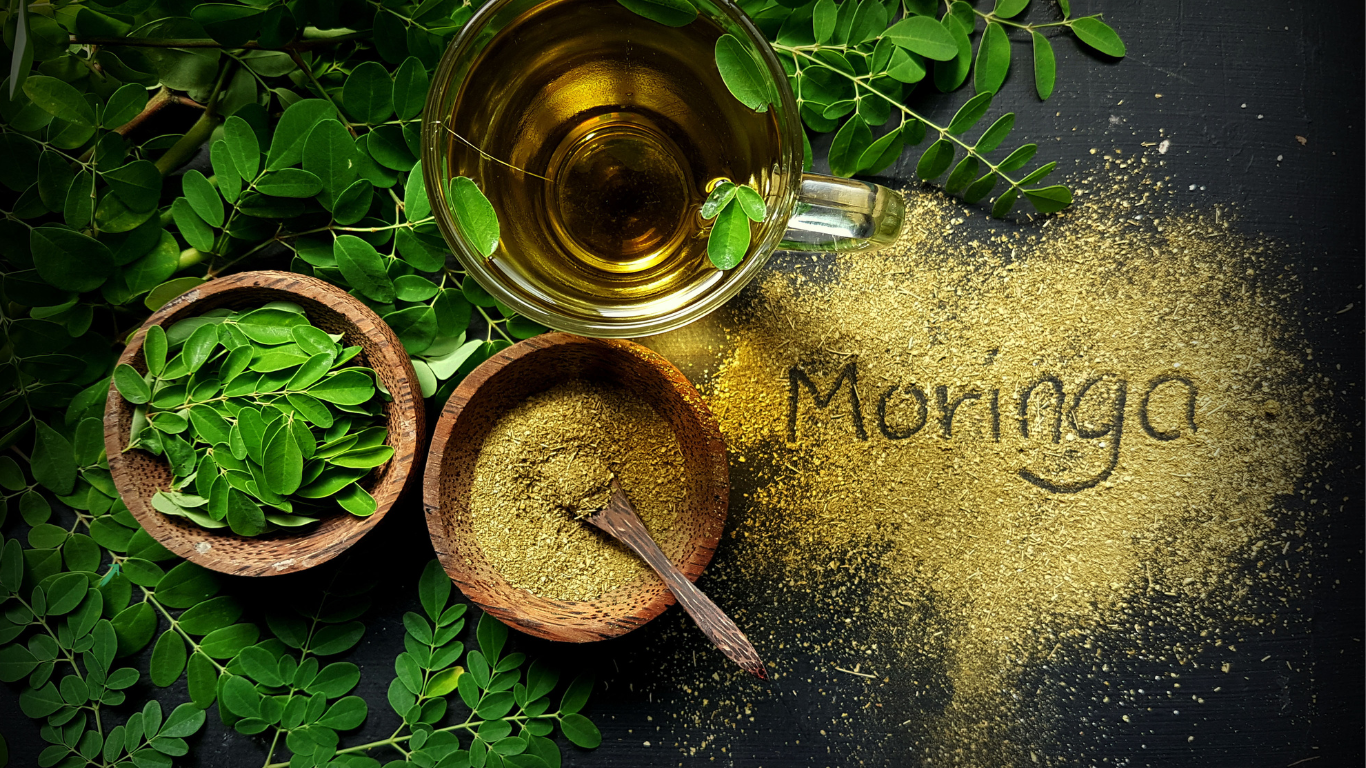Moringa leaves, revered for their nutritional richness and health benefits, have been an integral part of traditional cuisines across various cultures for centuries. From vibrant curries to refreshing salads and hearty soups, moringa leaves offer a versatile canvas for culinary creativity. In this comprehensive guide, we delve into the diverse world of moringa leaf recipes, exploring their flavors, textures, and nutritional profiles. Whether you’re a seasoned chef or an adventurous home cook, discover how to harness the potential of moringa leaves to create delicious and nutritious meals.
The Nutritional Powerhouse: Moringa Leaves
Before diving into recipes, it’s essential to understand why moringa leaves have garnered such acclaim in the culinary world. Moringa oleifera, the tree from which the leaves are harvested, is known as the “miracle tree” due to its dense nutritional content. Moringa leaves are packed with vitamins, minerals, and antioxidants, including high levels of vitamin C, vitamin A, calcium, potassium, and iron. They are also a source of essential amino acids, making them a valuable addition to any diet seeking to enhance overall health and wellness.
Popular Moringa Leaf Recipes Around the World
1. Moringa Leaf Curry:
One of the most beloved dishes featuring moringa leaves is the Moringa Leaf Curry. This dish is a staple in South Asian and Southeast Asian cuisines, where the tender moringa leaves are cooked in a fragrant blend of spices and often combined with coconut milk for richness. The result is a creamy and flavorful curry that pairs perfectly with rice or flatbreads. Variations of this dish can include lentils or other vegetables, adding layers of texture and depth to the curry.
2. Moringa Leaf Stir Fry:
For a quick and nutritious meal, Moringa Leaf Stir Fry is a go-to option. In this recipe, fresh moringa leaves are lightly sautéed with garlic, onions, and a medley of vegetables or meats. The stir-frying process preserves the vibrant green color and crisp texture of the moringa leaves while allowing them to absorb the flavors of the seasonings. This dish is not only delicious but also showcases the versatility of moringa leaves in everyday cooking.
3. Moringa Leaf Soup:
Moringa Leaf Soup is a comforting and nourishing dish found in many cultures. Typically made with a broth base, moringa leaves are simmered alongside other vegetables, grains, and sometimes protein sources like chicken or tofu. The result is a hearty soup bursting with vitamins and minerals, ideal for warming up on cold days or providing a revitalizing boost of nutrients year-round.
4. Moringa Leaf Salad:
For those looking to incorporate moringa leaves into raw dishes, Moringa Leaf Salad offers a refreshing option. The leaves, either raw or blanched for a milder flavor, can be tossed with a variety of fresh vegetables, fruits, nuts, and seeds. A light dressing of olive oil, lemon juice, and herbs enhances the natural flavors of the moringa leaves while providing a crisp and satisfying salad experience.
5. Moringa Leaf Smoothie:
In the realm of beverages, Moringa Leaf Smoothies have gained popularity for their health benefits and refreshing taste. Blended with fruits such as bananas, mangoes, or berries, along with yogurt or coconut water, moringa leaves add a nutritious boost to any smoothie. This vibrant drink is not only delicious but also a convenient way to incorporate moringa leaves into your daily routine.
6. Moringa Leaf Pakora:
A favorite appetizer or snack in South Asian cuisine, Moringa Leaf Pakora showcases the leaves in a crispy and flavorful form. The leaves are coated in a spiced chickpea flour batter and deep-fried until golden and crunchy. Served hot with chutney or yogurt dip, Moringa Leaf Pakora provides a delightful contrast of textures and bold flavors that are sure to satisfy cravings.
7. Moringa Leaf Pasta:
For pasta lovers, Moringa Leaf Pasta offers a unique twist on traditional Italian dishes. Chopped moringa leaves are sautéed with garlic, olive oil, and herbs before being tossed with cooked pasta. The result is a vibrant green pasta dish that not only looks impressive but also delivers a nutritious punch. Parmesan cheese or nutritional yeast can be added for extra flavor, making this dish a wholesome and satisfying meal option.
Exploring Regional Variations and Personal Creations
Beyond these popular recipes, moringa leaves inspire a myriad of regional variations and personal creations around the world. In the Philippines, Moringa Leaf Adobo combines moringa leaves with soy sauce, vinegar, and garlic for a savory and tangy dish. In West Africa, moringa leaves are often incorporated into stews and soups alongside ingredients like peanuts or palm oil, showcasing their adaptability in different culinary traditions.
Conclusion: Embracing the Versatility of Moringa Leaves
In conclusion, moringa leaves are a culinary treasure that offers both flavor and nutrition in abundance. Whether you’re exploring traditional recipes or experimenting with innovative creations, the versatility of moringa leaves ensures that there’s always something new to discover in the kitchen. From hearty curries to refreshing salads and everything in between, incorporating moringa leaves into your meals is a delicious way to enhance your culinary repertoire while reaping the health benefits they provide. So, gather your ingredients, unleash your creativity, and embark on a culinary journey with moringa leaves as your guide. Your taste buds and your body will thank you for it.
Questions And Answer’s:
1. What are the key health benefits of including moringa leaves in your diet?
Moringa leaves are renowned for their rich nutritional profile, containing vitamins A, C, and E, essential minerals like calcium and potassium, and high levels of antioxidants. Regular consumption supports immune function, boosts energy levels, and promotes overall well-being.
2. How should I prepare moringa leaves to retain their nutritional value?
To preserve the nutritional benefits of moringa leaves, it’s best to lightly cook them. Methods such as steaming or quick blanching help maintain their vibrant green color and nutrient content. Avoid prolonged cooking times to minimize nutrient loss. Alternatively, enjoy moringa leaves raw in salads or blended into smoothies for maximum nutritional impact.
3. What are some creative ways to incorporate moringa leaves into recipes beyond traditional dishes?
Beyond traditional recipes like curries and soups, moringa leaves can add nutritional value and flavor to a variety of dishes. Consider adding them to omelets or frittatas, blending them into sauces or pesto for pasta, or even baking them into crispy chips as a healthy snack option.
4. What should I consider when sourcing moringa leaves for cooking?
When sourcing moringa leaves, opt for fresh leaves whenever possible to ensure optimal flavor and nutrient retention. If using dried moringa leaves, ensure they are from a reputable source and stored properly to maintain quality. If harvesting from the wild or growing your own, ensure they are free from pesticides and other contaminants.
5. Can moringa leaves be used in desserts or sweet dishes?
While moringa leaves are commonly used in savory dishes, they can also be a unique addition to sweet recipes. Incorporate them into smoothie bowls or ice creams for a vibrant green color and added nutrients. They can also be infused into syrups or sauces for drizzling over desserts or incorporated into baked goods like muffins or energy bars for a nutritious twist.

